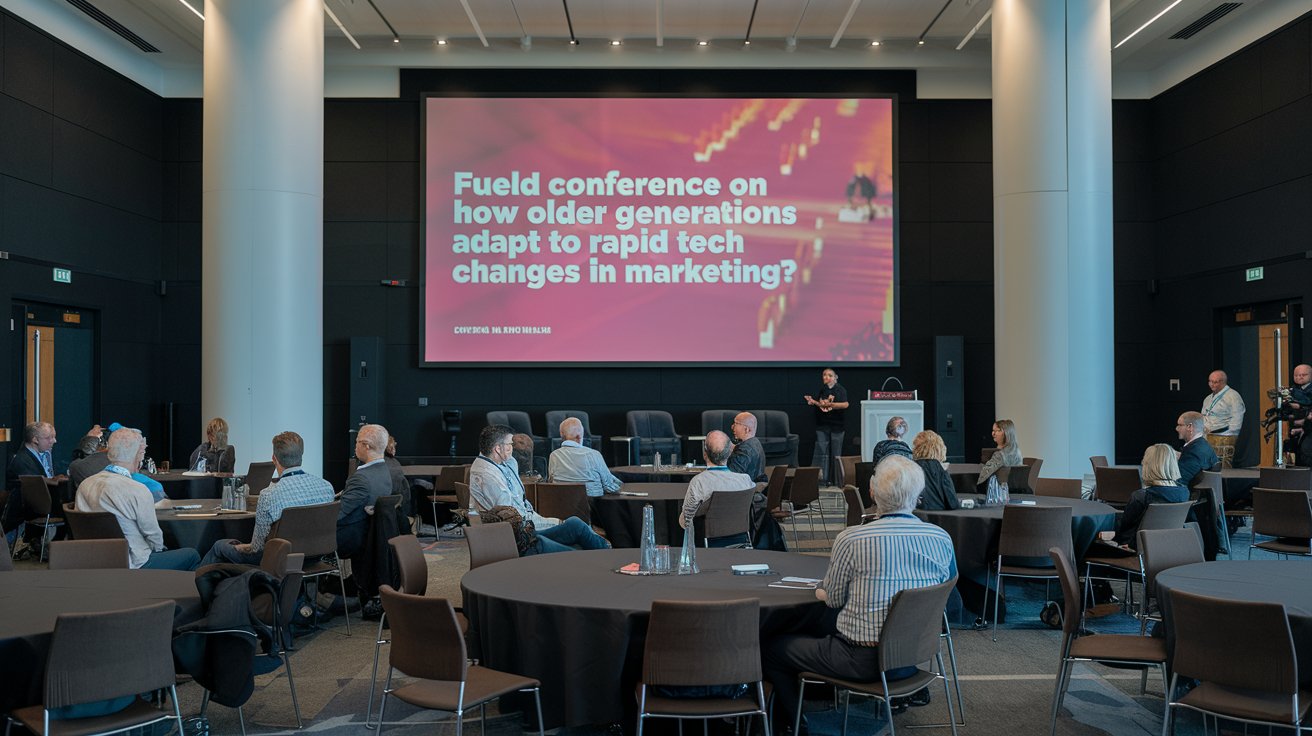Tech And Marketing Conference Highlights Tech Trends To Watch In 2025

Strong 8k brings an ultra-HD IPTV experience to your living room and your pocket.
How do you stay competitive when the digital landscape shifts faster than your team can keep up with? You adopt tools that think ahead. In 2025, digital transformation is no longer about adding more software—it’s about building systems that learn, predict, and adapt in real time. Brands that lead will rely on AI-native platforms, predictive personalization, and real-time analytics to move faster, target smarter, and connect deeper with their audiences.
These changes aren’t just trends—they’re the new baseline. Experts at marketing and technology conferences in Las Vegas, such as the FUELD Conference, will showcase how forward-thinking teams are turning these innovations into measurable growth. From more innovative distribution strategies to privacy-first data practices, the spotlight will be on brands that use technology to support their strategy and drive it forward. Let’s explore the seven biggest tech trends that will define digital transformation in 2025—and how you can use them to stay ahead.
1. AI At The Center Of Everything
In 2025, successful brands will not just use AI for small tasks but build their entire marketing systems around it. Being AI-native means that AI drives real-time decisions, predicts outcomes, and automatically adapts strategies. It’s the core engine, not an extra feature. If you’re still treating AI as a plug-in tool, you’re not fully leveraging its potential to scale, optimize, and personalize more quickly than your competitors.
Instead of using AI to write an email, teams are now:
- Use AI-native CRMs that automatically score leads based on live user behavior and purchase intent.
- Train brand-specific language models to generate content that aligns with the voice, tone, and context across various platforms.
- Run predictive simulations forecasting campaign outcomes before launch, optimizing spend and creativity in advance.
If AI isn’t baked into the foundation of your stack, you’re already moving slower than the competition.
2. Predictive Personalization Replaces Reactive Tactics
The most effective personalization today isn’t reactive—it’s predictive. Instead of waiting for the customer to act, smart systems are adapting ahead of them.
Leading teams are:
- Displaying personalized content modules based on users’ past engagement and in-session behavior.
- Analyzing real-time sentiment to adjust messaging tone in customer support or chat flows.
- Using dynamic email journeys that auto-adjust based on open rate, device type, or click-through timing.
In the future, personalization will go beyond customization to deliver predictive experiences powered by real-time data. At a leading tech and marketing conference, expect brands to showcase how they anticipate customer needs before they arise, rather than just reacting to them.
3. Industry-Specific Tools Outperform One Size Fits All
Off-the-shelf tools can’t deliver the performance today’s fast-paced industries need. MarTech in 2025 is verticalized—designed with your niche in mind.
This trend shows up in:
- Healthcare CRMs that manage compliant messaging, appointment flows, and personalized health journeys.
- SaaS stacks that track activation events, product engagement, and user churn signals without heavy dev input.
- Retail marketing platforms that tie inventory data to dynamic ads for location-based targeting.
The next wave of digital transformation is coming—and it’s smarter than ever. New tools will unlock real-time insights, accelerate growth, and reshape how brands connect with customers. It’s not about working harder, but making faster, sharper decisions that scale.
4. Content Strategy Starts With Smarter Distribution
Content creation alone won’t cut it in 2025. The next wave of digital transformation is all about smart distribution. At a leading global tech and marketing conference, like the FUELD Conference, the focus is expected to shift to how brands deliver content with precision. The real winners will be those who go beyond publishing and leverage platform-native performance to turn every asset into a growth engine that connects with audiences exactly where and when it matters most.
Smart marketers are:
- Atomizing pillar content into short-form videos, swipe files, and carousels optimized for each channel.
- Using AI-driven tools to publish at high-engagement windows based on audience behavior patterns.
- Partnering with niche networks and creators to reach communities without paid media dependency.
5. Discovery Moves Beyond Search
Search isn’t dead, but it’s no longer the only discovery path. In 2025, users find brands through AI summaries, voice queries, social search, and zero-click interfaces.
Top strategies include:
- Structuring content for AI-driven chat assistants, ensuring accurate and brand-consistent answers.
- Optimizing TikTok, YouTube Shorts, and LinkedIn posts for keyword-rich in-app discovery.
- Designing snackable, intent-driven content that delivers value without needing a click-through.
If you’re not visible where curiosity starts, you're invisible where it matters.
6. Real Time Beats Rear View Every Time
By the time you generate a monthly report, your audience has moved on. Modern marketers rely on live data loops that adapt quickly and forecast even faster.
Here’s how high-performance teams work:
- They build dashboards that detect performance anomalies and alert teams instantly.
- They use predictive analytics baked into campaign tools to shift spend mid-flight based on outcomes.
- They integrate test-and-learn environments into launch workflows for real-time creative swaps.
Insights that lag are opportunities lost. At a leading tech and marketing conference, speakers will emphasize the need for real-time decision-making powered by live data. Marketers won’t wait for reports—they’ll adjust campaigns mid-flight, guided by instant feedback and predictive analytics.
7. Privacy First Strategies Build Deeper Trust
Privacy isn’t a roadblock anymore. It’s a reason customers choose you. As cookies disappear and regulations tighten, transparent data practices become a growth advantage.
Brands leading here are:
- Designing interactive tools like quizzes and onboarding flows to collect zero-party data up front.
- Letting users manage their data preferences in real time, reinforcing control and confidence.
- Framing data collection as a value exchange, not surveillance, and showing users what they get in return.
To Sum It Up
Digital transformation in 2025 is not a destination. It is an ongoing process that demands clarity, speed, and more intelligent decision-making. The most successful brands will embed AI into their core workflows, personalize experiences before users ask, and treat distribution as a strategic priority rather than an afterthought. It's not about doing more. It's about doing what works, and doing it better and faster than ever before.
These shifts will be in the spotlight at upcoming marketing and technology conferences in Las Vegas, such as the FUELD Conference. Experts will focus on how real-time analytics, predictive systems, and privacy-first strategies drive modern growth. The conversation will move beyond buzzwords and into measurable results. In this new landscape, the brands that stay agile and act purposefully will define the next marketing era. Those who hesitate will be left trying to catch up.
Note: IndiBlogHub features both user-submitted and editorial content. We do not verify third-party contributions. Read our Disclaimer and Privacy Policyfor details.






